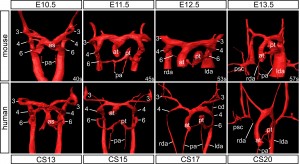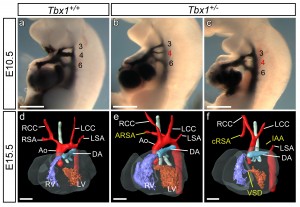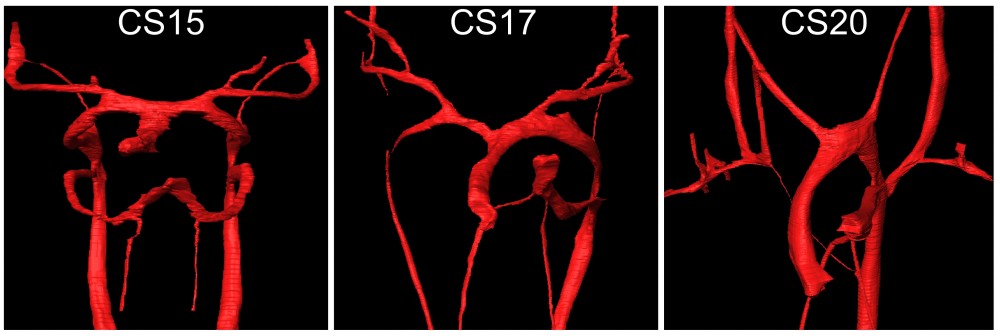Development of the aortic arch arteries

The aortic arch arteries that take oxygenated blood away from the heart are derived from the pharyngeal arch arteries. These are paired and symmetrical blood vessels that form during embryogenesis to connect the forming heart to the paired dorsal aortae. They rapidly remodel through selective regression and expansion to form the typical asymmetic pattern of the aortic arch arteries seen in the mature mammalian cardiovascular system.
The pharyngeal arch arteries form within the pharyngeal arches, a series of repeated protuberances that are bordered on the outside by ectoderm, on the inside by endoderm, and a mesodermal core surrounded by neural crest cell derived mesenchyme.

The development of the pharyngeal arch arteries is conserved between mammals with the blood vessels forming and remodelling in the same pattern in mouse and man.
Clinical consequences of aberrant arch artery development
DiGeorge Syndrome (also known as 22q11 deletion syndrome) is the commonest microdeletion syndrome, affecting 1 in 4000 births. It affects many organs during development including the heart and its great vessels. The section of chromosome that is deleted in this syndrome contains many genes, one of which is TBX1. Transgenic models have demonstrated that this transcription factor is critical for cardiovascular development and when removed causes 4th pharyngeal arch artery defects such as interruption of the aortic arch and aberrant right subclavian artery.

Research in Dr Simon Bamforth’s lab
We use a range of techniques to help us understand how our genes control the development of the cardiovascular system. When these genes are mutated and their function is altered, this developmental processes go wrong resulting in congenital heart defects.
The techniques we use include transgenic models, PCR, histology, immunohistochemistry, 3D imaging techniques, cell culture, quantitative real time RT-PCR and next generation sequencing.
